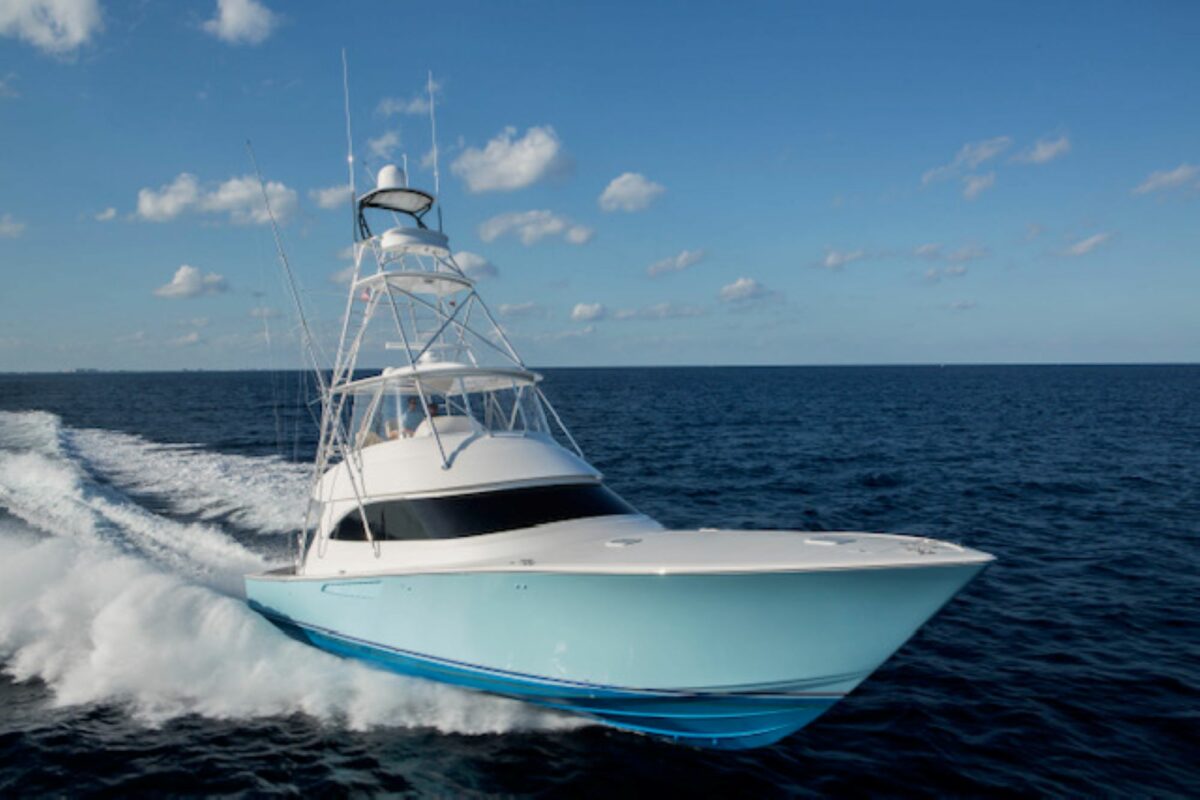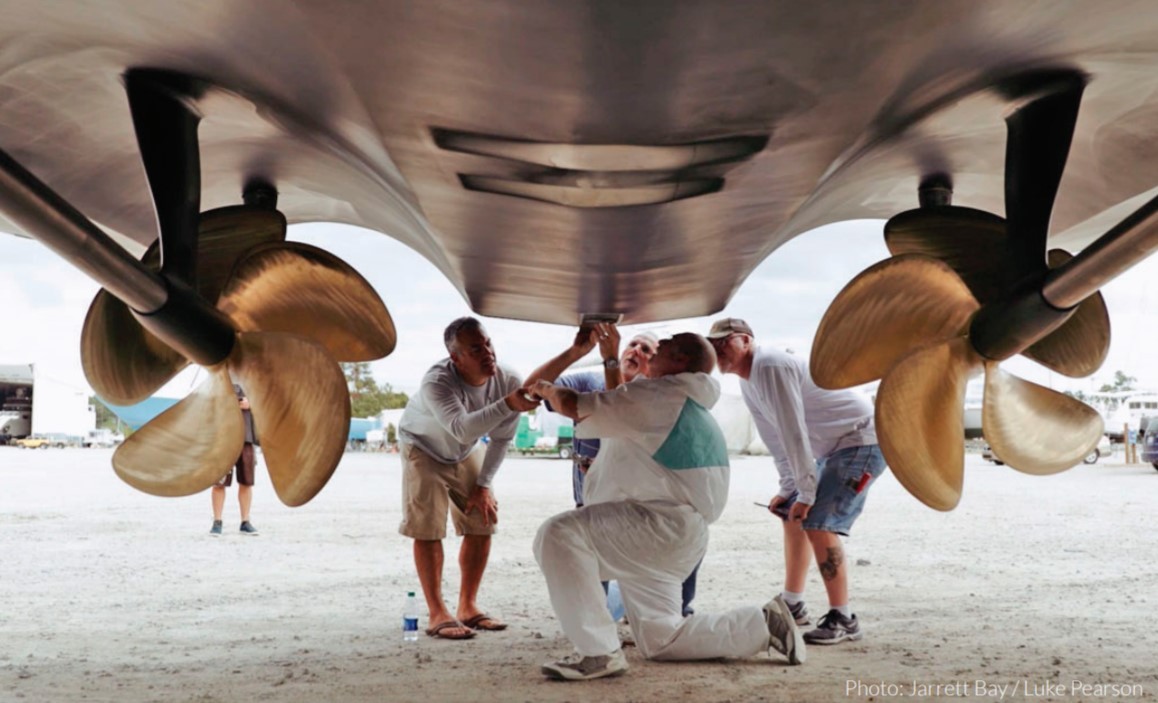Selecting a set of propellers for an outboard-powered vessel may initially seem like a very simple task, however there are a multitude of factors that contribute to finding the correct match for each boat.
Although there is not a one-size-fits-all solution, a correctly propped vessel should perform with desirable running attributes from hole shot to cruise in most conditions. The motors should also be able to run within the recommended RPM range at WOT. Outboard props are typically categorized by size, pitch and the number of blades.
The dimensions stamped on the hub, 14 x 19 for example, indicate a diameter of 14 inches and pitch of 19 inches. The brand and output of the outboard will dictate the size of the prop that is required and the vessel weight, hull design and average operating conditions will determine the optimum pitch needed.
Most brand-new center consoles will already have a set of props that have been factory and/or dealer tested to provide optimum performance for that vessel in average conditions, and often no prop changes will be needed. However, that does not mean you cannot improve upon performance by tweaking the wheels. The deck layout and load of the boat while underway can also play a role in which props will push the boat most effectively. If a boat has a couple thousand pounds of coolers, coffin boxes and ice located forward of the console, then a lower pitch four-blade prop with a higher rake angle and cupping may be worth a try, as it will provide more bow lift. The extra surface area of the four-blade prop should reduce slip. This will allow the boat to run at a lower
RPM more efficiently and generally operate with the least strain possible on both the gearcase and motor while pushing a heavy load. The downside to the four-blade prop is more drag in the water due to the extra surface area, which typically reduces top end speed and efficiency. Picking props is all about priorities. Typically, performance is the main reason for searching for a set of new props, but another concern should be the longevity of the outboard. An over or under propped outboard can cause great strain on both the motor and the gearcase that could ultimately lead to a catastrophic failure. In today’s reality of supply-chain shortages, a blown lower unit could result in considerable downtime. Chris Bazor, owner of Grander Marine in Orange Beach, Alabama sells a variety of triple and quad outboard powered boats including Invincible and Fountain and is well schooled in the art of fine tuning a set of outboard props. “The load on the motors is the most important factor to consider when attempting to find the correct prop setup. On a quad powered40-foot Invincible catamaran, the gallons per hour should be equal for all four motors at cruise. If the outside or inside motors are burning more fuel, then it is an indicator that those motors are carrying more load, placing additional strain on the gearcase that can ultimately lead to a mechanical failure,” Bazor says.
Finding the correct setup for a quad powered vessel has its own set of challenges, as Selecting a set of propellers for an outboard-powered vessel may initially seem like a very simple task, however there are a multitude of factors that contribute to finding the correct match for each boat.
Often, a quad powered boat will need a different set of props between the outside and inside motors to find the correct recipe for peak performance.
The ideal arrangement can even vary for the same boat, depending on the load and sea conditions. A boat that is tournament rigged with multiple livewells looking to make long runs in rough seas would fare better with a lower pitch prop that provides more bow lift and less slip, while that same vessel loaded moderately and operated in less strenuous conditions could benefit from a more aggressive pitched prop that provides improved top end performance.
“The perfect scenario is to have two sets of props for a boat,” Bazor says. “One set is used for tournaments, overnight and long-range trips, while another set is reserved for day-to-day cruising operation under more moderate loads and sea conditions.”













